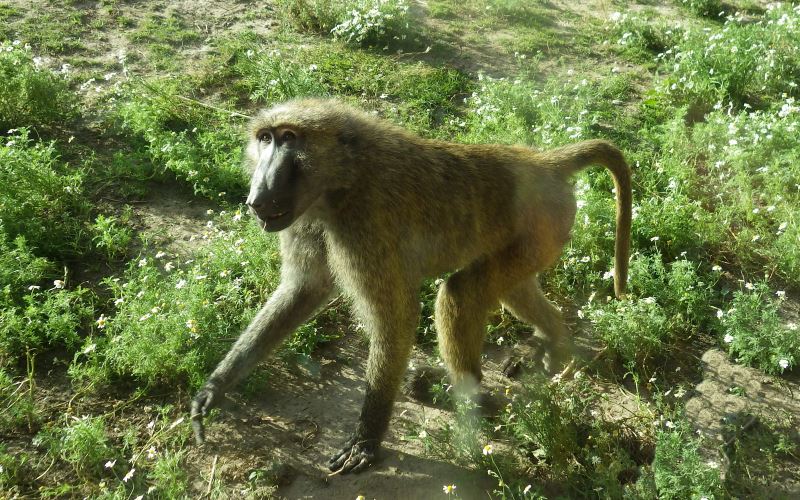Olive baboons are the most widespread baboon species in Africa.

Olive baboon (Papio anubis), Toronto Zoo.
Olive baboons are highly social and they live in groups consisting of several dozens of individuals which each individual having a specific place in the hierarchy. Female baboons inherit their status from their mothers. Males on the other hand leave their native group and join another.

Baboon society is complex and individuals within the group form relationships with each other including friendships without a sexual component.
Olive baboons are omnivorous and they aren’t particularly picky about what they eat.
The fact that the female olive baboon is fertile is signaled by her anogenital area turning a reddish-pink color and swelling enormously. It does make her uncomfortable and susceptible to infections.

The pink coloration and swelling of the female baboon’s anogenital area signals that she is fertile and ready to mate. This picture shows a moderate amount of pinkness as female baboons can swell up enormously.
It can look abnormal to us humans. When I was taking these pictures several visitors around me at the zoo were guessing that the baboons with the swollen pink butts must have some unthinkable venereal disease. While humans can find this gross, it is part of the female monkey’s normal biology and in fact male monkeys find it attractive.
Further Readings:
Olive baboon (Papio anubis) on ARKIVE.
Olive baboon on Wikipedia.



